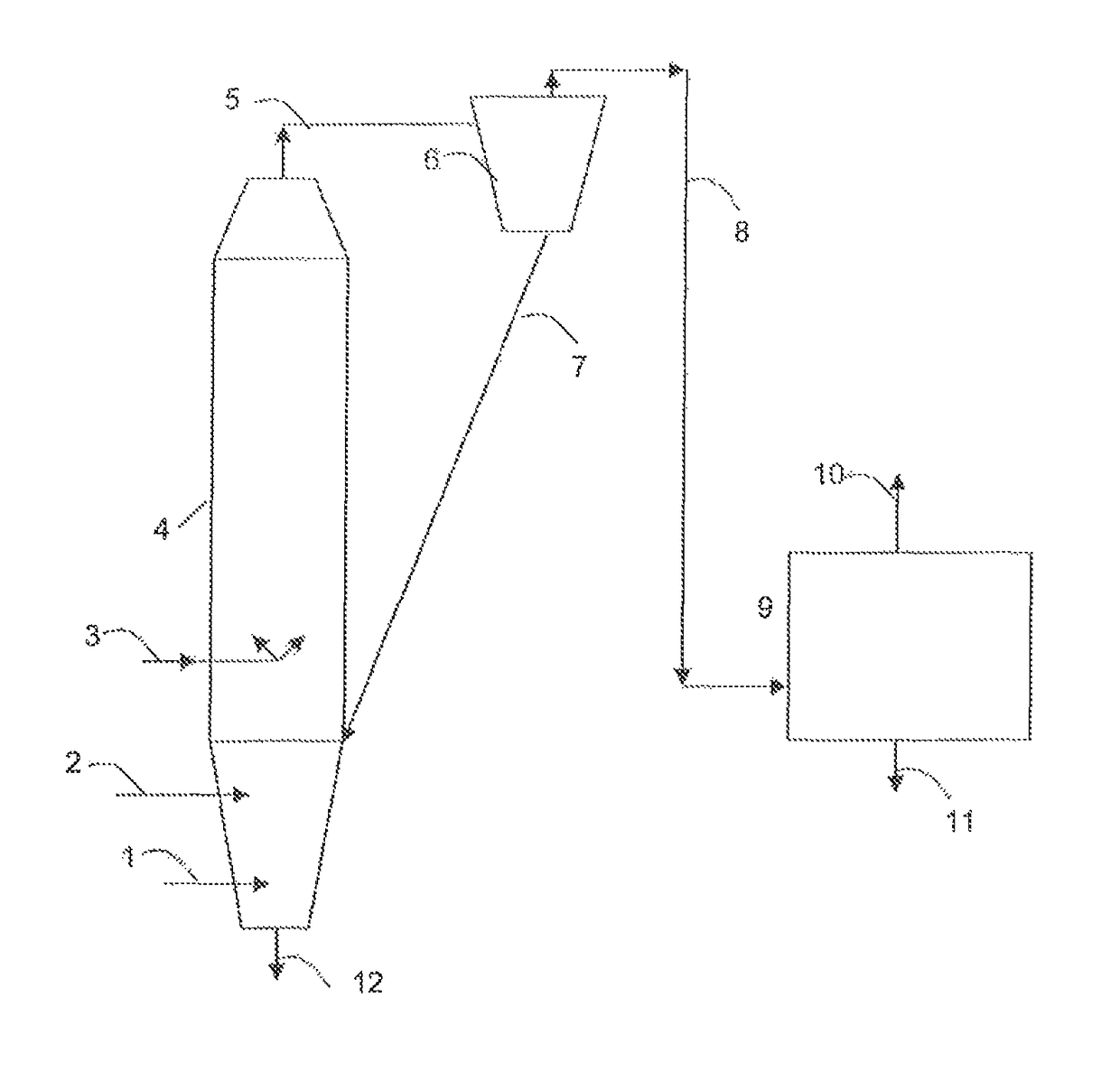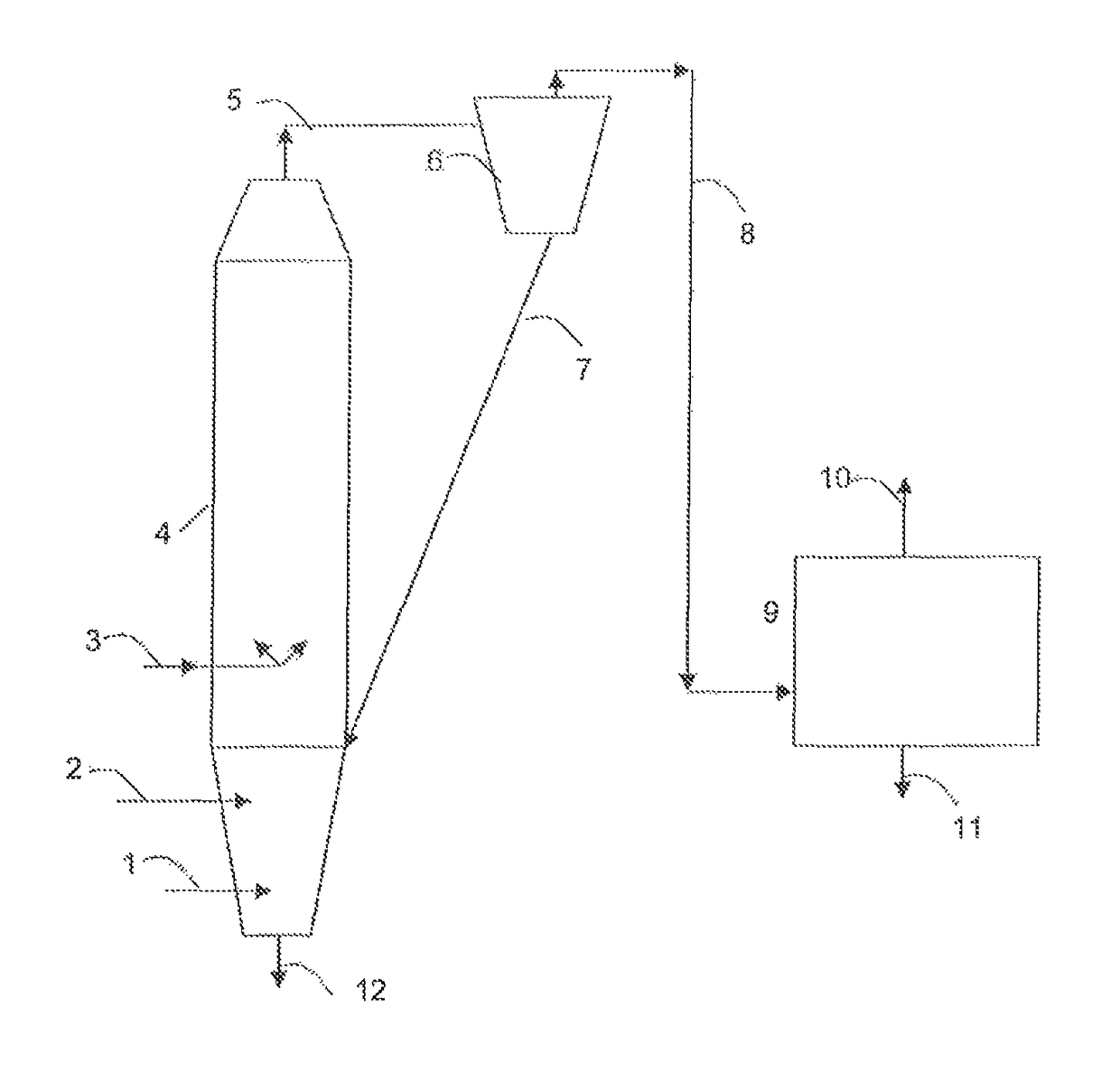Methods for removing contaminants from exhaust gases
a technology of exhaust gas and contaminants, applied in the direction of separation of dispersed particles, chemistry apparatus and processes, separation processes, etc., can solve the problems of significant performance loss, unstable ozone and the oxidized form of nitrogen oxides, and gas streams containing contaminants. achieve the effect of reducing or eliminating the concerns about residual ozon
- Summary
- Abstract
- Description
- Claims
- Application Information
AI Technical Summary
Benefits of technology
Problems solved by technology
Method used
Image
Examples
Embodiment Construction
[0049]Turning to the FIGURE, a semi-dry scrubber 4 is shown with ozone injection for the removal of nitrogen oxides and other contaminants.
[0050]The gas stream 1 such as a flue gas stream from an industrial process enters the semi-dry scrubber 4 at the bottom section and is contacted with in situ rejuvenated aggregates by lime slurry injection 2 into the throat of the scrubber 1. The smaller size or lighter aggregates are reintroduced into the scrubber 4 by recycle line 7.
[0051]Ozone is injected through line 3 at the height above the throat that represents at least 15% of the total scrubber height. The gas stream exiting the semi-dry scrubber 4 through line 5 has fine aggregates that are separated in the cyclonic separator 6.
[0052]The gas stream with fine dust from cyclonic separator 6 is then introduced through line 8 into particulate separator 9 which may be a bag house. The gas stream passes through the fabric filter for the desired level of particulate removal and is then exhaus...
PUM
| Property | Measurement | Unit |
|---|---|---|
| temperature | aaaaa | aaaaa |
| temperature | aaaaa | aaaaa |
| temperature | aaaaa | aaaaa |
Abstract
Description
Claims
Application Information
 Login to View More
Login to View More - R&D
- Intellectual Property
- Life Sciences
- Materials
- Tech Scout
- Unparalleled Data Quality
- Higher Quality Content
- 60% Fewer Hallucinations
Browse by: Latest US Patents, China's latest patents, Technical Efficacy Thesaurus, Application Domain, Technology Topic, Popular Technical Reports.
© 2025 PatSnap. All rights reserved.Legal|Privacy policy|Modern Slavery Act Transparency Statement|Sitemap|About US| Contact US: help@patsnap.com


